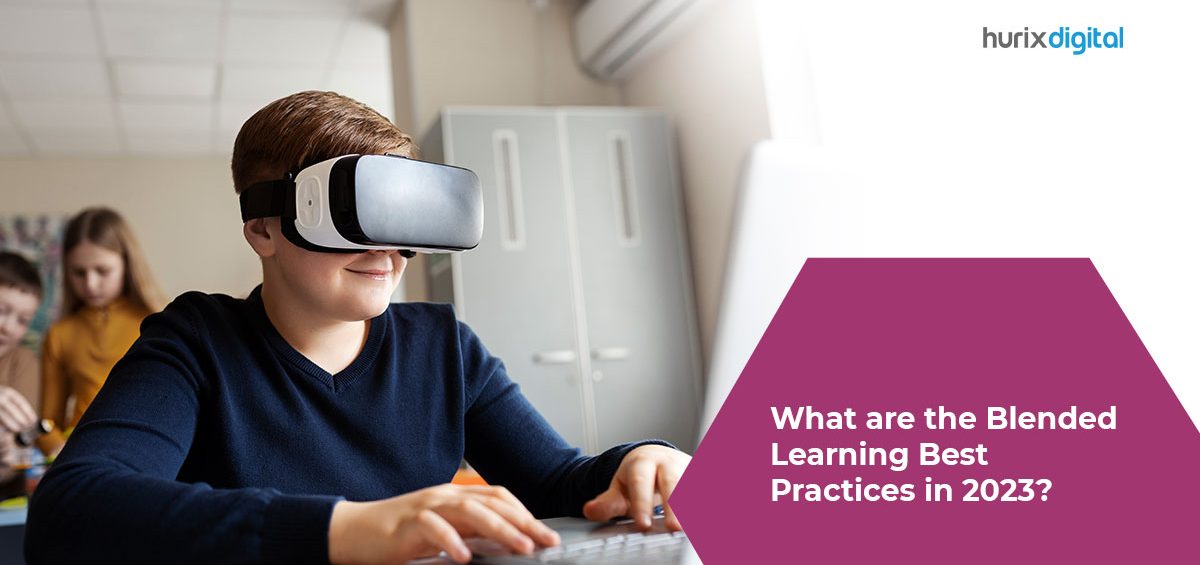Blended learning is the latest method of imparting education after the world opened up post-COVID-19 pandemic. It is a very effective learning method as it combines the best of in-person learning and e-learning.
With the ongoing integration of technology into the classroom, educators are increasingly turning to blended learning as a way to engage students and enhance their learning experiences. It offers a flexible and dynamic approach that can be customized to meet the individual learning needs of learners.
This article will explore the blended learning best practices for achieving success with blended learning in the modern classroom.
Whether you’re a seasoned educator or just starting in this role, this guide will provide valuable insights and tips for navigating the world of blended learning and unlocking its full potential for your students.
Top 5 Best-Blended Learning Practices
Blended learning offers many benefits over traditional in-person classroom learning, such as flexibility in schedules and the ability for students to learn at a pace that works best for them. It has also been found to improve the engagement of students while simultaneously being a more cost-effective way to deliver learning.
Moreover, these benefits can be amplified or sustained if certain best practices are followed consistently.
Here are the Top 5 best-blended learning practices to get the most out of this revolutionary new method of imparting knowledge.
1. Personalization and Differentiation
One of the most critical aspects of blended learning is personalization and differentiation. This means tailoring instruction to meet the individual needs of each student.
With blended learning, teachers can use technology to create personalized learning paths for each student. This can be achieved through the use of adaptive learning platforms, which use data to determine the student’s strengths and weaknesses and provide them with content that is appropriate for their level.
Another way to personalize instruction is through the use of online assessments. Teachers can use these assessments to determine the level of understanding of each student and then adjust their teaching accordingly.
This helps ensure that students are challenged but not overwhelmed by the content.
2. Implement Gamification
Gamification is the extensive use of game elements, such as points, badges, and leaderboards, in non-game contexts. In blended learning, gamification can increase student engagement and motivation.
In addition, by incorporating the interactive elements of game design into the learning experience, teachers can create a more immersive and interactive environment.
One way to incorporate gamification into blended learning is through educational games. These games can teach various subjects, from math and science to history and literature.
They can also be used to reinforce learning that has already taken place in the classroom.
3. Encourage Interactive Communication
Collaboration is an essential part of blended learning. By using online tools such as discussion forums and wikis, students can work together to complete projects and assignments.
This helps students develop critical collaborative skills and allows them to learn from each other.
One way to encourage collaboration in blended learning is to create group projects that require students to work together. Teachers can also use online discussion forums to facilitate group discussions and encourage students to share their ideas and perspectives.
4. Use Different Blended Learning Models
There are several different models of blended learning, each with its strengths and weaknesses. Some of the most popular models include the flipped classroom, rotational, and flex models.
The flipped classroom model involves students watching pre-recorded lectures or videos at home and then completing activities and assignments in the classroom. This allows for more individualized instruction, as teachers can spend more time with individual students.
The rotational model involves students rotating through different stations or activities throughout the day, with some online activities and others face-to-face. This allows for a mix of individualized instruction and group work.
The flex model involves students having control over the pace and place of their learning. For example, students can work online or in the classroom and move at their own pace through the material.
5. Data and Analytics to Your Advantage
Finally, data and analytics are an essential part of blended learning. Using data to track student progress and identify areas where students are struggling, teachers can adjust their instruction and provide additional support.
One way to incorporate data and analytics into blended learning is through understanding management systems (LMS). They can track student progress and provide teachers with data on student performance.
This can be used to inform instruction and provide additional support.
Summing It Up
Blended learning has been around for some time now, and its benefits are as relevant today as they were when it was first introduced. By implementing the above-mentioned blended learning best practices, educators can create a more effective, dynamic, and engaging learning experience that meets the needs of modern learners.
Blended learning will undoubtedly remain essential to the educational landscape in 2023 and beyond. We can explore and experiment with new ways of integrating technology into the classroom and create a brighter, more accessible future for learners worldwide.
Hurix Digital’s Higher Education Solutions and K12 education solutions are innovative, cutting-edge, and tailored to meet today’s learners’ ever-evolving needs. With a focus on technology-driven learning, our solutions are designed to engage students and educators alike, making the learning process more immersive and effective.
Our Higher Education Solution is ideal for universities and colleges looking to modernize their teaching methods, streamline administrative processes, and offer students a personalized learning experience.
Meanwhile, our K12 education solutions provide a comprehensive platform for schools and educators to deliver high-quality content, assess student progress, and foster student engagement.
With Hurix Digital’s education solutions, you can be confident that your institution will be at the forefront of the education industry, delivering exceptional learning experiences that equip students for success in the modern world.











